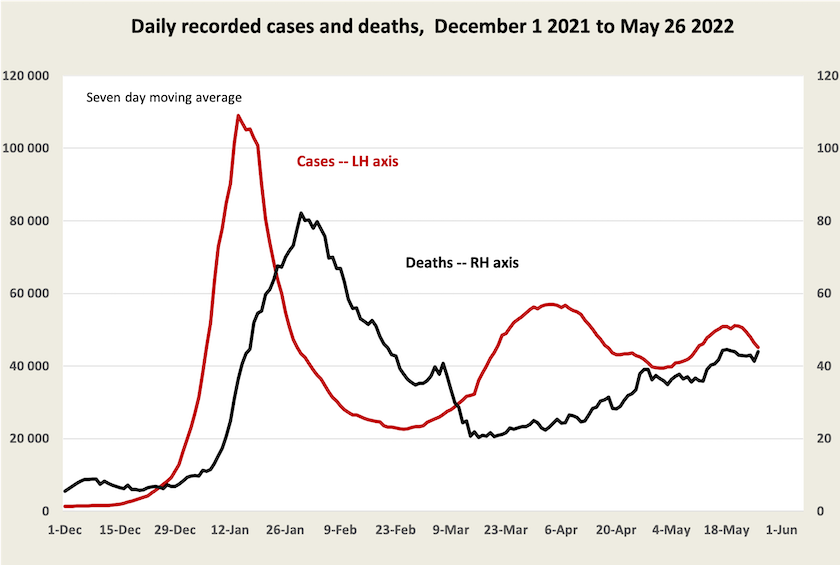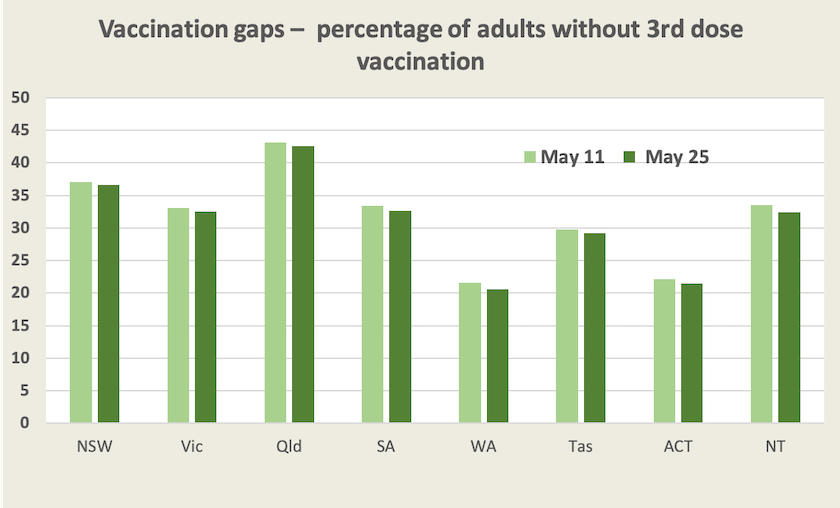The pandemic

Perhaps because there are no dramatic events associated with Covid-19, perhaps because our own or our friends’ experience with Covid-19 has not been too painful, perhaps because we believe that it is dangerous only for very old and frail people with co-morbidities, or perhaps because we just want it to go away, Covid-19 has slipped out of our policy concerns.
But it is still taking the lives of about 40 Australians a day (think of an airline crash once a week). It is causing long-term health problems for many sufferers. It is overloading our already-overstretched health systems. It is disrupting people’s personal and business plans. It will probably present a greater threat of death or severe illness as the benefits of vaccination or prior exposure wear off.
I will therefore continue to keep the roundup updated with basic information on cases, deaths and vaccination in Australia.
Cases and deaths
Maybe cases are on the way down as this most recent wave subsides, but deaths are not falling.

(Systems analysts looking at this pattern of case numbers will recognize the phenomenon of slowly dampening oscillations – similar to the effect when you throw a stone into a pond and the waves keep on getting smaller and smaller.)
Cases are on the way down in all states, including Western Australia where they peaked about a week ago.
The death rate per case, based on an assumed three-week lag between diagnosis and death, is around 0.12 percent, or 1 in 800. It is much lower in Western Australia, at 0.03 percent or 1 in 3400. Western Australia also has the highest level of third-dose vaccination as seen in the next graph, which emphasises the proportion of the adult population not yet vaccinated.

Note that over the two weeks from May 11 to May 25 in most states there has been little progress in third dose vaccination.
For comprehensive data on recorded cases, deaths, hospitalizations and more, see the website maintained by Juliette O’Brien and her colleagues: Covid-19 in Australia. Data on vaccination is on the ABC’s vaccine tracker, maintained by Inga Ting and her colleagues. The Guardian’s data tracker has further select data, including reported infection rates in regions within states.